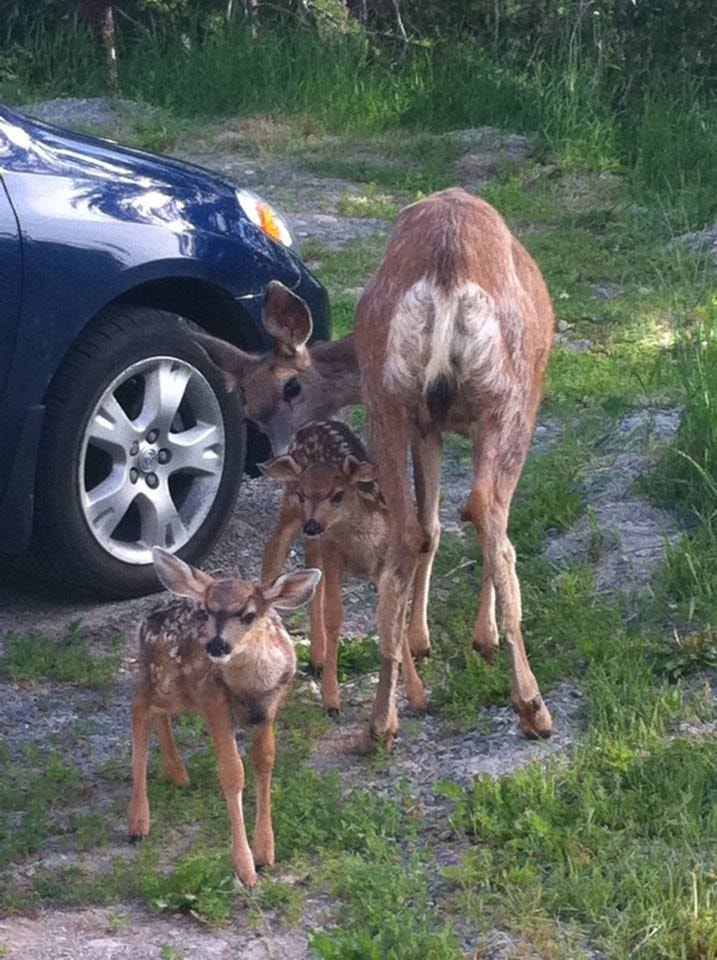The East Kootenay Deer Translocation Trial has completed removal of deer in Kimberley last week and in Invermere as of Wednesday, this week. Next week, deer will be removed from Cranbrook and the Elkford.
Liz White of the Animal Alliance, a group which provided some funding for the study, was in Kimberley last week observing the process and says overall it was successful and professionally done.
“Over three days, Tuesday, Wednesday and Thursday, last week, 20 deer were removed from Kimberley, which is what the permit allowed,” White said. “One deer died at capture. They think it regurgitated food and it got caught in the trachea. She was unconscious the whole time.
“But generally speaking, it was done very professionally. Three vets were part of it. I watched the darting. It was pretty smooth. Most of the deer didn’t run away after darting, just walked. It took about five minutes to unconsciousness. Immediately upon being down, the vets bound their legs and covered and their faces, and they were moved to a transport vehicle. Then they were given a reversal drug and a valium-type drug to keep them calm, then were driven down to the relocation site.
“It was really well done.”
She says an effort was made to try to dart only adult does without fawns although there were two or three family groups moved out of Kimberley.
“I don’t think there were any orphans.”
The key however, White says, is whether the deer survive.
The Kimberley deer were taken to a protected forest area south of Cranbrook, near the border. It’s an area where the snow isn’t deep and forage should be relatively easy to find. Seven of the 20 deer are collared and White says one has already been lost to predation by a cougar.
“This is what we will find out. Will they find feed? Will they be predated at a greater rate than resident deer?”
The deer removed from Cranbrook next week may be moved to the same area, she says, but not the Invermere or Elkford deer — that’s too long a drive.
White says the Animal Alliance does take some positives from this trial.
“What is very positive to me is that Elkford and Kimberley, particularly Kimberley, are communities who have done their due diligence. Kimberley has a feeding bylaw and they are enforcing it, the are allowing higher fences, you have a volunteer fruit picking program, the city is planting deer attractive plants, there’s the garbage bylaw. All of these things have resulted in lower deer numbers without a cull. The interest in trying all these non-lethal things is very positive.”
She is less complimentary to Cranbrook and Invermere, who “cull one month and translocate the next without doing the preventative work”.
“Sure you can pass a feeding bylaw, but you have to enforce it. Kimberley has been very proactive and the town has benefitted.”
